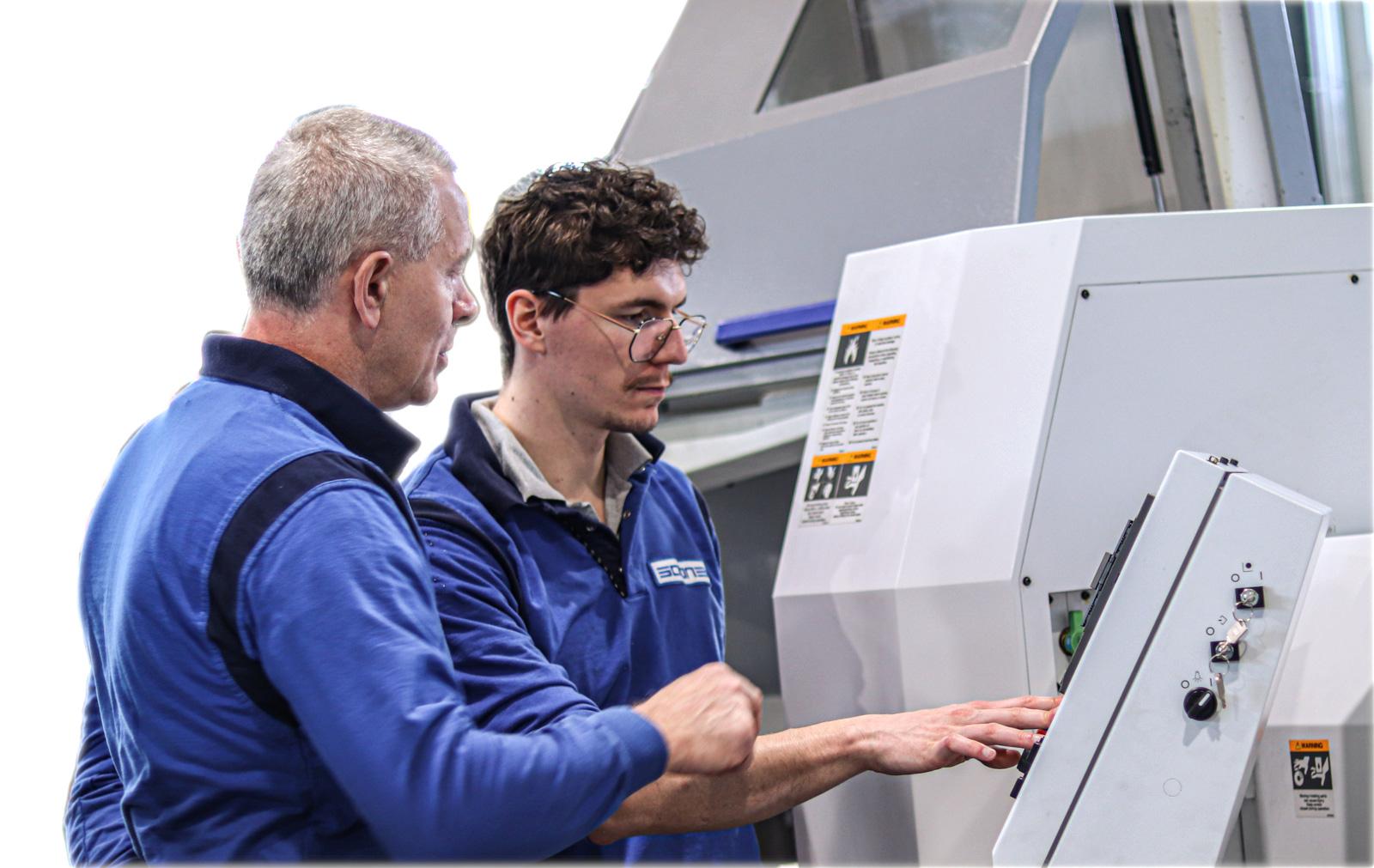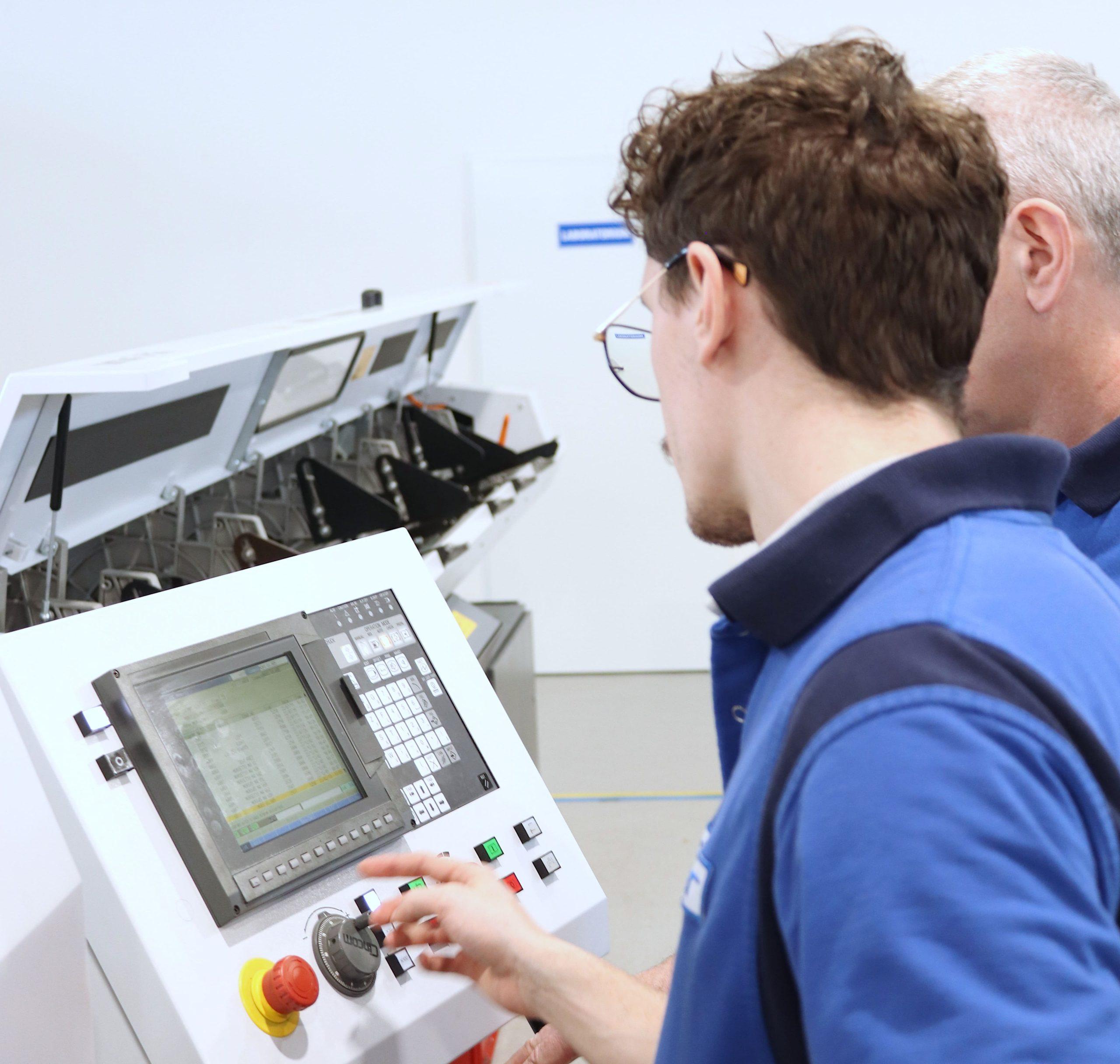The job of CNC machines operator

The role of modern CNC machine tools in the development of civilization
The technological progress taking place before our eyes represents both an opportunity and a challenge for the modern world. Modern machines allow more efficient and cheaper production of goods for consumers. Robots relieve workers of exhausting or monotonous duties.
On the other hand, however, there is widespread concern about whether advancing automation will take away jobs previously reserved for humans. Is it possible for humans and automatons to coexist in the modern work environment?
To answer this question, let’s look at how the role of machine operators has changed throughout history.
It is no exaggeration to say that machine tools created the modern world. From the first accurate lathe – used by James Watt to create the steam engine – to the first commercially available CNC machine in the 1950s, machine tools have led to many of the world’s latest technological revolutions. With the implementation of computer numerical control (CNC) machine tools, access to low-cost household appliances would be possible, air travel would still be limited to a few enthusiastic individuals, and small manufacturers could not compete with mass production.
As machines’ technical level develops, machine operators’ role grows. Their role has evolved from craftsmen to turners or millers to today’s operators sitting in front of a computer making adjustments to a machine program.
In this article, we take a look at the history of CNC operators. Operating CNC machines is just another step in a long history of changing work.
Early history: the ancient Egyptian two-man lathe
The ancient Egyptians developed the first machine before computers and the Industrial Revolution. Around 1300 BC, they invented the lathe. Egyptian lathes required two operators to turn the workpiece and cut with a sharpened tool. Many machine tools operated this way until the Industrial Revolution because there was no easy way to turn the workpiece. The ancient Egyptians used this method to mold wood and carve stone bowls. They also introduced the idea of cutting with hard gems, which we still use for diamond tools.
The 18th century: machine operators as craftsmen
Let’s move to the 18th century. Machine tool operators as a separate profession did not exist. Instead, craftsmen built machine tools to create their products. These craftsmen operated their own machine tools. All machine tools would be highly customized to meet the production needs of a particular craftsman.
In some ways, this was similar to how we treat machine tools today. Mass production is declining, and small manufacturers are looking for machines that can be easily adapted to their rapidly changing products. We no longer build our own machine tools – as the early craftsmen did – but custom tooling and fixturing is still a big part of the machine operator’s job. Accuracy was low on these early machine tools. In the late 18th century, James Watt needed an accurate way to manufacture a cylinder for his steam engine. Industrialist John Wilkinson invented a machine that could accurately drill large cylinders, starting the industrial revolution and the rise of CNC machine tools.
The 19th and 20th centuries: modern machine tool operators
Modern machine operator work began in the early 1800s. Inventor Henry Maudslay is considered the founding father of machine tools. He and his employee Joseph Whitworth introduced standardization in manufacturing. Around this time, Matthew Murray released the first commercial machine tool.
This meant that the task of the machine operator changed again. Standardized machines meant that they no longer had to build custom machine tools but became skilled operators.
By 1840, a whole range of commercial machine tools were available: universal lathes, turret lathes, milling machines, automatic lathes, and metal planers.
From then until today, the work of machine operators includes:
Machine operators are skilled technicians. They may not design products themselves, but they can spot a bad design and are able to select the right tools and processes for the job.
The computer age: CNC machines appear and the job of CNC machines operator
In the 1950s, the first numerically controlled (NC) machines appeared. This ushered in an era of rapid change for machine operators.
John T Parsons was a self-taught machinist. He was manufacturing propellers for World War II when he came up with the idea of using punch cards to operate machine tools directly. He encountered a technical problem and worked with MIT to solve it. Together, they produced the first NC milling machine. Parsons was shocked when MIT took over the invention and pushed him out of the project. However, the beginning of the CNC era became a reality, and some consider him the father of the Second Industrial Revolution.
The first NC machines had their programs stored on punched cards. Changing a program would require restarting the entire card or taping a hole and punching a new one in the case of minor changes. It was always the job of the machines’ operators to plan operations. However, operators had to turn their plans into abstract programs for the first time. Manual programming took a long time using punched cards – it took up to eight hours to write a program for milling a single part.
In 1956, computer programming skills appeared in machine operator job descriptions. Researchers at MIT developed the first CNC programming language, G-Code, using computers to schedule points. Those eight hours of programming have now been reduced to just 15 minutes. Computer-aided design (CAD) emerged around 1960, and as early as 1963, General Motors produced the first CNC machined prototype from a 3D CAD model. The work of today’s machine operators still includes all the duties it did in 1840. In addition, machine operators have had to learn new skills, such as programming in G-Code and working with CAD models.
The 21st century – automation and robotization
Recent developments mean another change for CNC machine operators. Operating machine robots allows small manufacturers to increase productivity by using a robot to load and unload parts into a CNC machine. The skills required to program a robot are a natural progression from the skills needed to program CNC machines. In fact, if you know G-code, it is very easy to program a collaborative robot.
As a result, this latest change in machine operator work is less drastic than some of the previous changes. Machine operators still require the same skills as in the past. Now, they can add “robot programmer” to the list.
